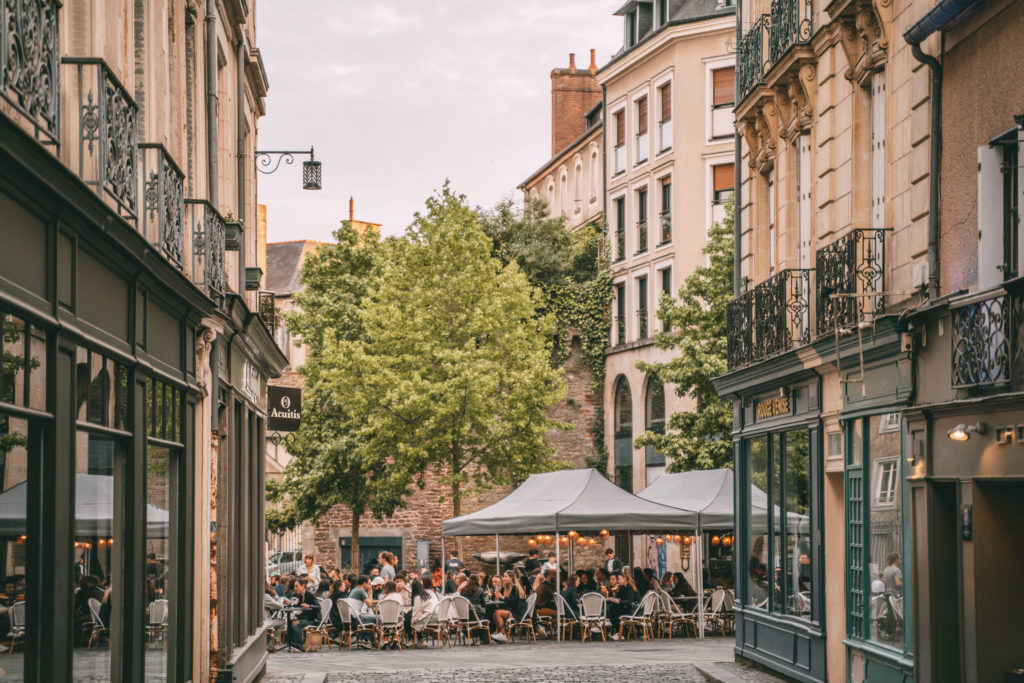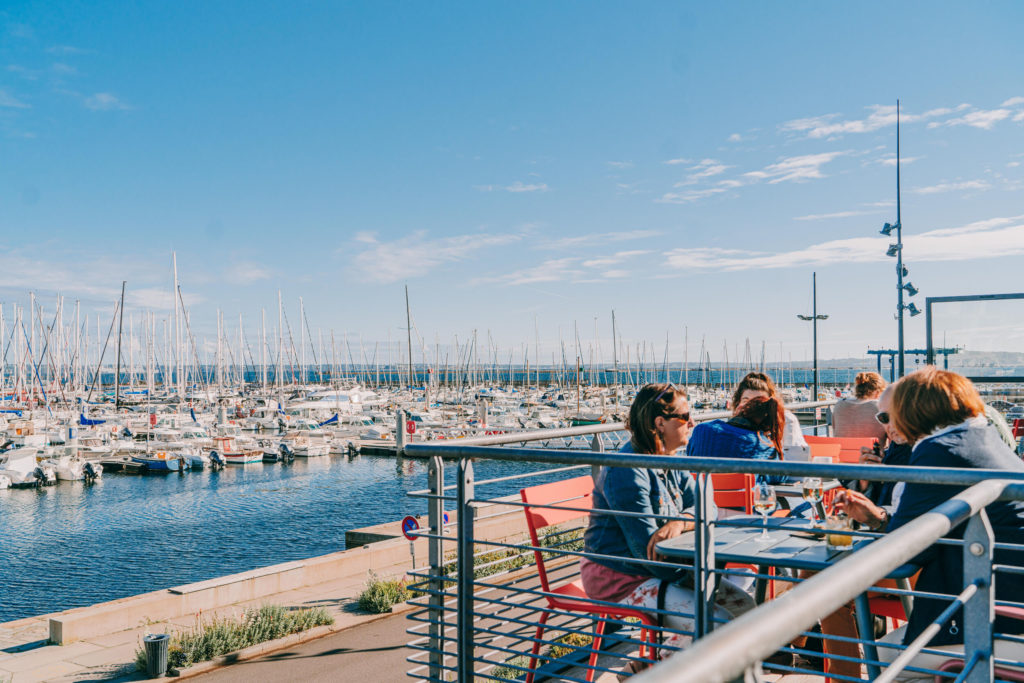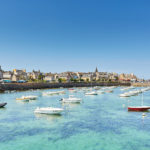Table of Contents
Walking through the streets of Saint-Gilles-Croix-de-Vie feels like strolling on a beach, even when you’re in the middle of town.
This small fishing village in western France has turned millions of seashells into sidewalks and streets.
It has created a unique place where the ocean is quite literally under your feet and here’s a guide on how to get there.
How to Get to Saint-Gilles
Getting to Saint-Gilles is simple whether you’re driving or taking the train. Here’s how to get there:
Option 1: Using a Car
From Paris, the drive takes about four hours on smooth highways.
Take the A11 toward Nantes, then switch to the A87. Once you hit the coast, follow the signs to Saint-Gilles.
The route is well-marked, and you’ll find plenty of places to stop for food or fuel along the way.
Option 2: Using the Train
If you’d rather not drive, trains run regularly from Paris Montparnasse station to Nantes.
This first leg takes about two hours, and tickets may cost between €30 and €60, depending on when you book.
From Nantes, catch a regional train to Saint-Gilles, which takes another hour and a half. Buy your tickets early, as prices go up closer to your travel date.

Option 3: By Air
Flying is another option. The nearest airport is in Nantes, about an hour away from Saint-Gilles. Several airlines schedule daily flights from Paris and other major European cities.
Once you land, you can rent a car or take a shuttle bus to Saint-Gilles. The bus runs several times a day.
Local buses connect Saint-Gilles to nearby towns if you want to visit other places in the region.
They’re cheap and run often during the summer months. The bus station is right in the town center, near the main square.
Things to Do in Saint-Gilles
The shell streets aren’t the only reason to visit this charming coastal town. They are just the start of what Saint-Gilles offers.
- Begin your day at 7 am at the morning fish market.
The local fishing port still brings in fresh catches daily, and you can watch boats coming and going from the harbor.
- Take a walk along the old port where fishing boats line the harbor.
- Visit the town’s history museum that sits in an old salt warehouse near the port.
- If you’re a water sports fan, visit the local sailing school for lessons for all skill levels.
- For a peaceful afternoon, head to the town’s botanical gardens. They’re small but beautiful.
- Several local guides offer walking tours that tell the story of the shell streets.
- Visit the beaches and coast. The town has several beaches within walking distance of the center.
These activities connect naturally with the town’s laid-back feel, making it easy to fill several days without feeling rushed.
The best part? Most attractions are within walking distance of each other, so you can take your time and enjoy the shell-paved streets as you go.
When to Visit Saint-Gilles
The best time to see Saint-Gilles is between May and September when the weather is warm and sunny.
July and August are the busiest months, with locals and tourists filling the streets. If you want a quieter trip with fewer crowds, plan your visit for May, June, or September.
The shell streets look their best after a light rain when the calcium in the shells gives them an extra white shine.

Where to Stay in Saint-Gilles
Saint-Gilles has options for every budget, from simple guesthouses to upscale hotels. Here are some good choices:
Hotel du Port sits right on the harbor, giving you front-row seats to the fishing boats.
The rooms are clean and comfortable, with some offering balconies overlooking the water. Prices may start at around €90 per night. For a more local experience, try one of the many bed and breakfasts in the old town.
La Maison des Coquillages (The Shell House) is a restored fisherman’s cottage with four guest rooms, each named after different types of shells found in the area. The owners serve fresh breakfast using local ingredients.
Food and Restaurants
The local food scene focuses on seafood, with many restaurants serving fish caught on the same day.
Restaurant Le Quai is a local favorite, known for its seafood platters and views of the shell-paved harbor walk. Make sure to try the local specialty: oysters served on beds of crushed shells.
For lunch, the market square has several casual spots where you can grab a quick bite.
The local bakeries make excellent sandwiches using fresh bread and local ingredients. Try La Boulangerie des Marins for their tuna sandwich made with locally caught fish.

Tips for Your Visit
Here are some tips to help you make the best of your Saint-Gilles trip.
Tip 1: Pack Comfortable Shoes
First, get a comfortable shoe with a good grip. While the shell streets are beautiful, they can be slippery when wet. The calcium from the shells can also be harsh on leather, so bring shoes you don’t mind getting a bit worn.
Tip 2: Bring a Camera
If you’re into photography, you can come with a macro lens if you want to capture the detail in the shell-paved streets.
Early morning or late afternoon light shows off the texture best. Also, the tourist office provides maps marking the streets with the best-preserved shell paving.
Tip 3: Plan Your Shopping
Most shops close for lunch between 12:30 and 2:30 PM, so plan your shopping around these times. Restaurants get busy during lunch hours, so make reservations if you plan to eat at popular spots.

Planning Your Trip
Book your accommodation at least two months ahead if you’re visiting in the summer.
The town gets busy during peak season, and the best places fill up fast. The same goes for restaurants if you’re planning to eat at well-known spots.
The local tourist office website lists events happening throughout the year. This includes the summer seafood festival when the town comes alive with food stalls and music.
They also provide updates about street maintenance, as sometimes sections of the shell pavement need repair.
Shell Streets: A Living History
Saint-Gilles shows how coastal communities can use local resources in smart ways. When you walk on these streets today, you’re not just walking on shells. You’re stepping on hundreds of years of local history, preserved one shell at a time.

I’ve always been captivated by Brittany’s unique charm, and I started this site to share my favourite spots and tips with fellow travellers. From exploring hidden beaches to experiencing local culture, I aim to provide practical advice and fresh perspectives on everything this destination has to offer.




